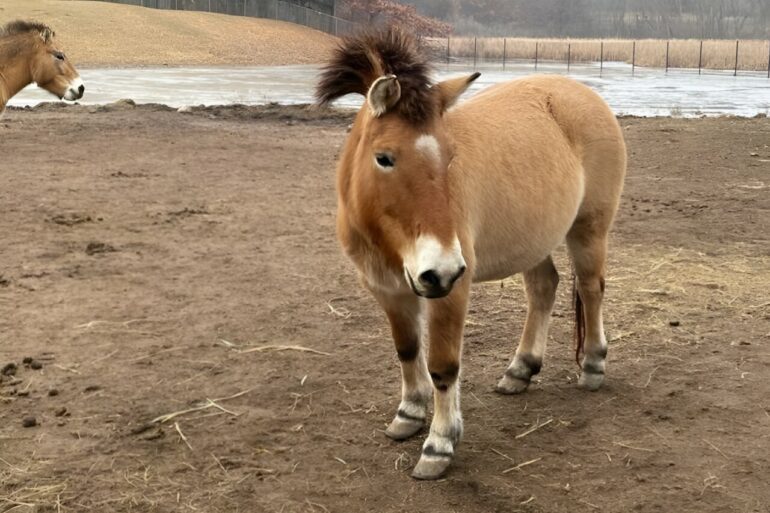University of Minnesota researchers have successfully mapped the complete genome of the endangered Przewalski’s horse. Once extinct in the wild, the species now has a population of around 2,000 animals thanks to conservation efforts.
The study, published in the journal G3: Genes, Genomes, Genetics, was led by Nicole Flack and Lauren Hughes, researchers at the College of Veterinary Medicine, along with Christopher Faulk, a professor in the College of Food, Agricultural and Natural Resource Sciences. U of M students contributed to the genome sequencing through Faulk’s animal science course.
“The genome is the basic blueprint for an animal and tells us what makes a species unique and also tells us about the health of a population,” said Faulk. “My students worked together to produce the highest quality Przewalski’s horse genome in the world.”
Researchers can now use this as a tool to make accurate predictions about what gene mutations mean for Przewalski’s horse health and conservation.
“Studying genes without a good reference is like doing a 3-billion-piece puzzle without the picture on the box,” said Flack. “Przewalski’s horse researchers studying mutations in an important gene need a good reference picture to compare their puzzle with.”
Researchers used a blood sample from Varuschka, a 10-year-old Przewalski’s mare at the Minnesota Zoo, to construct a representative map of genes for the species. The Zoo has long been active in Przewalski’s horse breeding and management, with over 50 foals born since the 1970s.
“We were excited to partner with the University of Minnesota to preserve the genetic health of the species as their populations continue to recover, both in zoos and in the wild,” said Anne Rivas, doctor of veterinary medicine at the Minnesota Zoo. “We are thrilled to offer our community the opportunity to see the horse as the results of our conservation efforts.”
The cutting-edge sequencing technology used to construct the genome uses a small machine about the size of a soda can. Its portability means this method could be adapted for further study of wild Przewalski’s horses in remote locations.
Future applications of the reference genome may include studying genes that help the horse adapt to environmental changes, identifying mutations associated with specific traits or diseases, and informing future breeding decisions to help improve upon genetic diversity.
Given the extreme population bottleneck that occurred during the near-extinction of Przewalski’s horse, such understanding is crucial for continued breeding efforts.
More information:
Nicole Flack et al, The genome of Przewalski’s horse (Equus ferus przewalskii), G3: Genes, Genomes, Genetics (2024). DOI: 10.1093/g3journal/jkae113
Provided by
University of Minnesota
Citation:
Researchers map genome of the last living wild horse species (2024, June 14)



